NFV#44 - Roundtable
Sophia Antipolis, 07 February 2024
On December 11, the third Cloud Native Roundtable was held as a special session of the 44th ETSI NFV Plenary Meeting in Tokyo Japan. This time, the roundtable mainly focuses on sharing the experience and research achievements of the Asian operators.
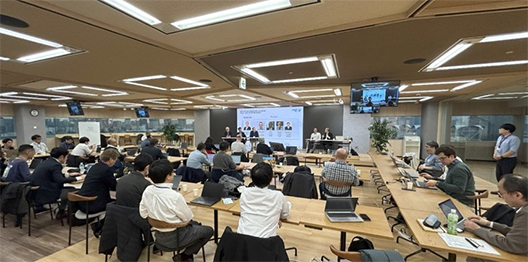
Four prominent engineers leading the commercial development of network virtualization for major Japanese operators (KDDI, Softbank, Rakuten Mobile, and NTT DOCOMO) were invited to share the current development status, challenges of the Telco cloud and expectations for future network virtualization concepts and standardization. Researchers from University of Tokyo, NTT, and China Mobile were invited to present their view on the further evolution of mobile network architecture and network virtualization technologies. Besides these, the CTO of Linux Foundation Networking was invited to this roundtable as well to give a keynote speech on open-source activities for network virtualization and how could open source and ETSI NFV can further collaborate.
Ranny Haiby, CTO of Linux Foundation Networking (LFN), gave an overview of the activities of ONAP, Nephio and ODIM, which are representative open source projects for network virtualization under the LFN umbrella. He also highlighted the importance of cooperation between these projects and standardization, and made a proposal for strengthening cooperation with ETSI NFV in the future. Ranny said that key to successful collaboration is having individuals active in both open-source projects and standardization with acknowledgement on the differences between the two. He also mentioned the importance of face-to-face collaboration and encourage more activities to be held in the future.
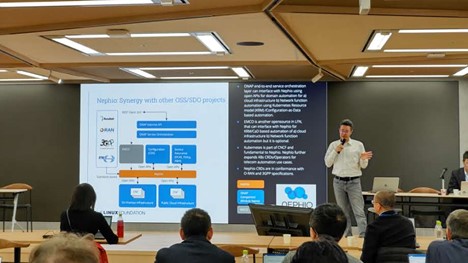
Dr. Yuji Sekiya, Professor of the University of Tokyo, introduced his research on stateless 5G core network. In the current mobile core network architecture, each network function needs to perform stateful processing, and network functions accommodate a large number of terminals, resulting in a high load and the need to maintain consistency among multiple NFs. To achieve network cloudification, it is necessary to consider not only the virtualization infrastructure and orchestration functions, but also the evolution of applications. By proposing an independent stateful database, and the design of separated SCTP endpoint, a new type of stateless 5G core network with procedural process was introduced. It could bring web application-like performance and parallelization and better tolerance of fault and disaster.
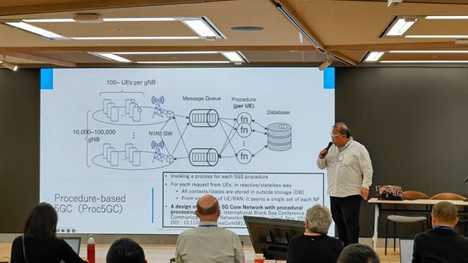
Hajime Miyamoto, expert of Common Platform Technology Department in KDDI, made a presentation on their efforts to move from a silo structure to an integrated and common virtualization infrastructure in the commercial development of NFV infrastructure. KDDI is working to realize a common virtualization infrastructure architecture that allows existing VNFs such as IMS and SBC, as well as the ever-expanding 5GC, to run in a container environment on top of VMs. To promote these initiatives, KDDI has become a prime integrator, selecting its own hardware, building its own network, and developing private clouds in-house.
In addition, these network functions are controlled using the generic VNFM OpenStack Tacker in accordance with the ETSI NFV reference architecture. The challenges of the CNF era were also shared, such as the strong coupling of Kubernetes and CNFs, which still causes version compatibility issues, the need to prepare for the short lifecycle of K8S. It was also reported that the industry needs to address the existence of restrictions on virtual network generation and multi-tenancy due to the network requirements of CNFs that have not been standardized, the different requirements for container environments in CNFs themselves, and the disclosure of VNF information for the purpose of standardization. In addition, there was a recommendation that standardization should maximize the benefits of network virtualization abstraction and promote simplified integration.
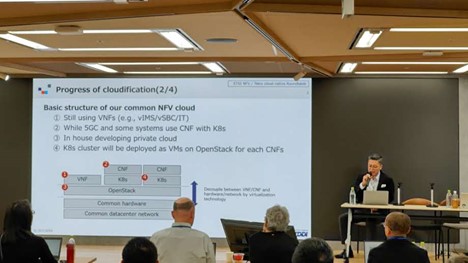
Hiroki Baba, Senior Research Engineer in NTT, introduced the concept of a new network architecture called inclusive core defined in 6G/IOWN (Innovative Optical and Wireless Network). It uses high performance FaaS in both 5G-Advanced and 6G network to realize In-Network Computing (INC) and control plane message processing platform. An In-network Service Accelerator Platform (ISAP) architecture integrates network and computing platform, both E2E network and service offload and pipeline into hardware accelerator processing to achieve deterministic performance without CPU interventions. In order to improve 5G core control plane robustness and avoid signaling storm, control plane message bus cluster for redundancy and AI based Long Short Term Memory (LSTM) based analytic are proposed to provide managed services by extend infrastructure such as messaging broker, database, eBPF, et al. A PoC for network stabilization and processing at the edge was presented.
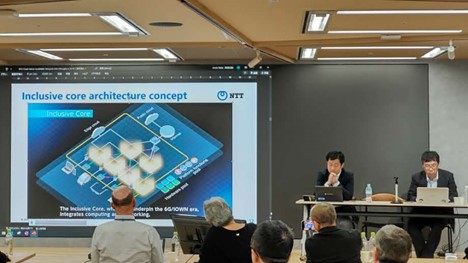
Jian Xu, project manager in China Mobile, presented the next generation telco infrastructure concepts of ABCDNETS (AI, Blockchain, Cloud, Data, Network, Edge, Terminal, Security) with the state of the rise of 5G + Industrial Internet and AI. He mentioned that network applications are increasingly requiring a combination of high-bandwidth, low-latency network resources, and ubiquitous, heterogeneous computing resources, serving individuals, industries, and the public. Therefore, telcos need to change their value positioning from traditional communication service provider to a new information service provider, which requires a new info service system, focusing on both computing and connectivity.
To realize ABCDNETS concept, future telco infrastructure has lots of capabilities including, hyper-distributed cloud architecture, endogenous agility, network intelligence, telco-grade resiliency, integrated orchestration and low-carbon & high-efficiency. He suggested that future standardization direction for computility network inter-operability needs to consider NFV-based computility network overall architecture, computing resource objects abstraction such as GPU/NPU, computing offload, computility network orchestrator and intent-based operation.
Yusuke Takano, Director in Softbank, shared two challenges: one is CSAR as a fundamental framework to automate various processes from procurement to development and deployment, and to achieve the reliability and availability required as a social infrastructure, as well as the short-term product life cycle in the container age. He also suggested that the Cloud-native approach should be adopted in the standardization of network virtualization. As for the future network virtualization infrastructure, data processing and power will be generated and consumed locally, and social infrastructure will be distributed throughout Japan in the future. He also introduced that the infrastructure would move towards multi-cloud, including public cloud, and that he would like to work on zero-touch operations and E2E orchestration.
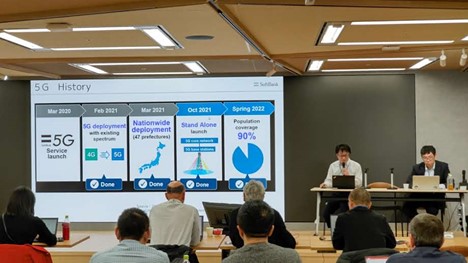
Tatsuya Toyama, senior manager in Rakuten Mobile, presented the infrastructure containerization journey from the beginning of 5G core introduction in 2020. Rakuten Mobile is currently working on containerization of its existing 4G core network. The challenges in developing a bare metal container environment to run telco applications were reported. There are still many issues such as separation of CPU usage to ensure performance, Kernel parameter restrictions, management and control issues to utilize SR-IOV for DPDK applications for high-speed packet processing, and support for hugepage, and it was argued that the telecom community should work to resolve these issues. From an orchestration perspective, there was also a request for a shift from specific to generic and the need for support for both IT and Telco reporting applications in MANO.
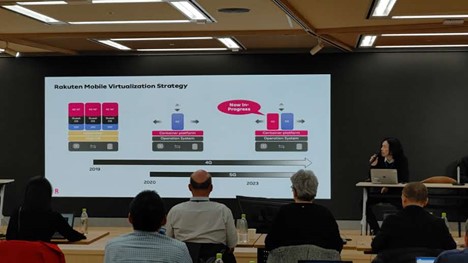

The ETSI NFV ISG will continue to reflect the views of these operators, and with enhanced collaboration with important open-source projects in the cloud-native area, will continue to standardize for the future of network virtualization. The next roundtable will be held on March 18th, 2024, at Orange Gardens in Paris, France. We look forward to your participation!

